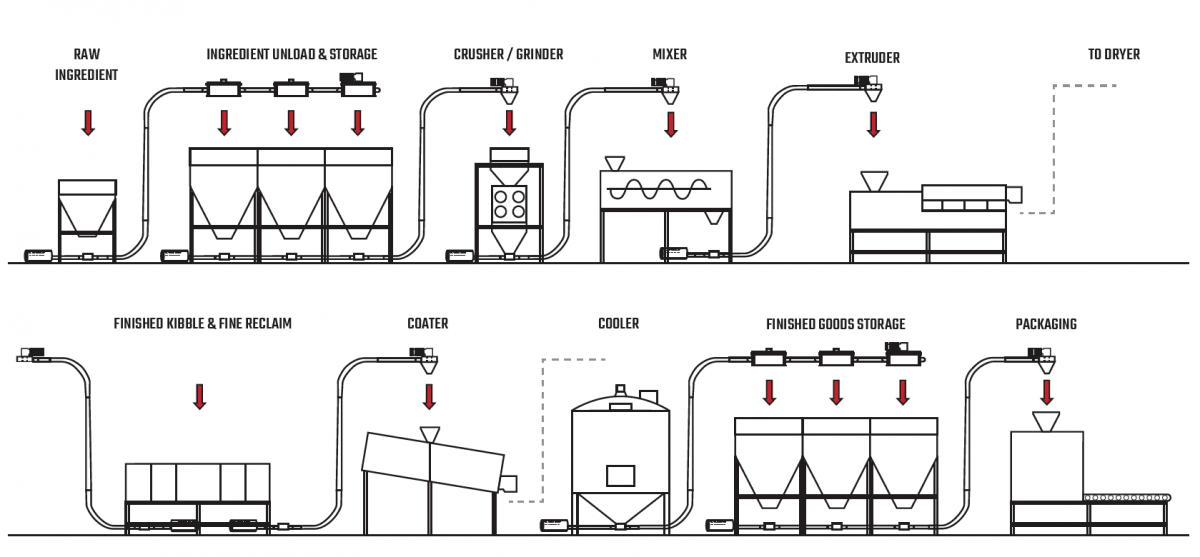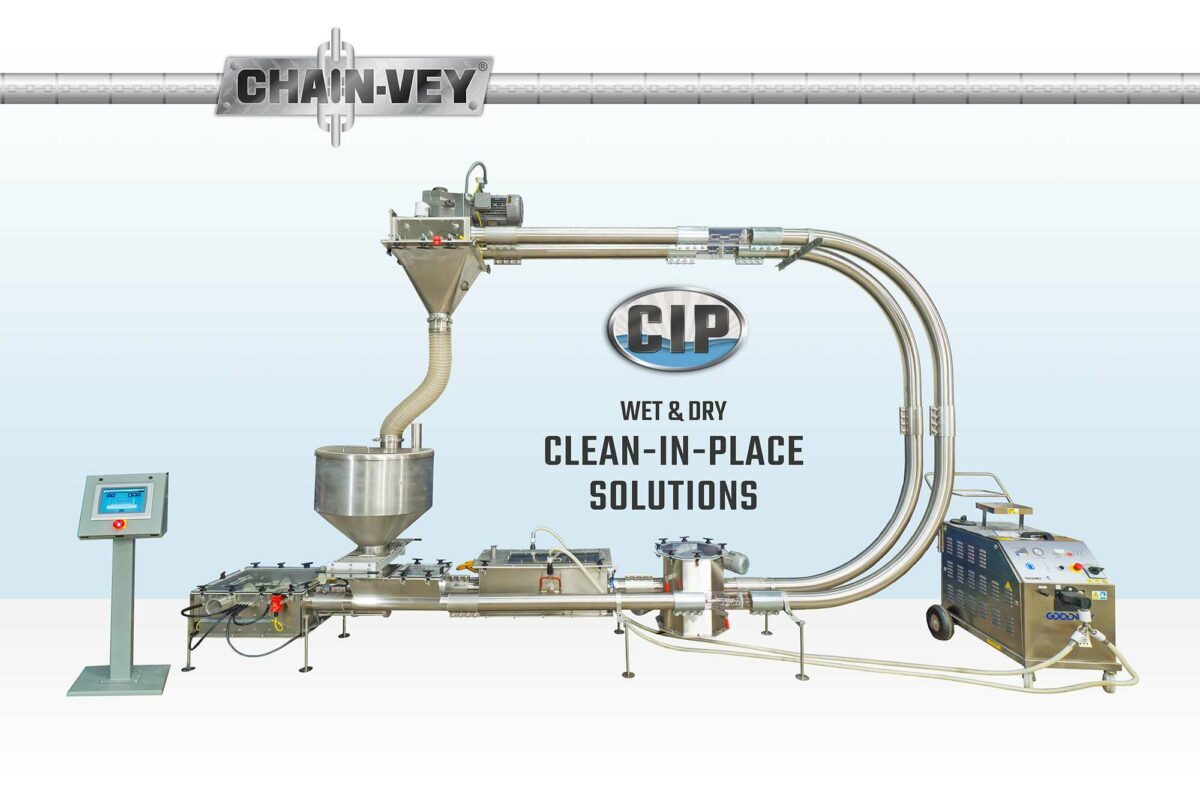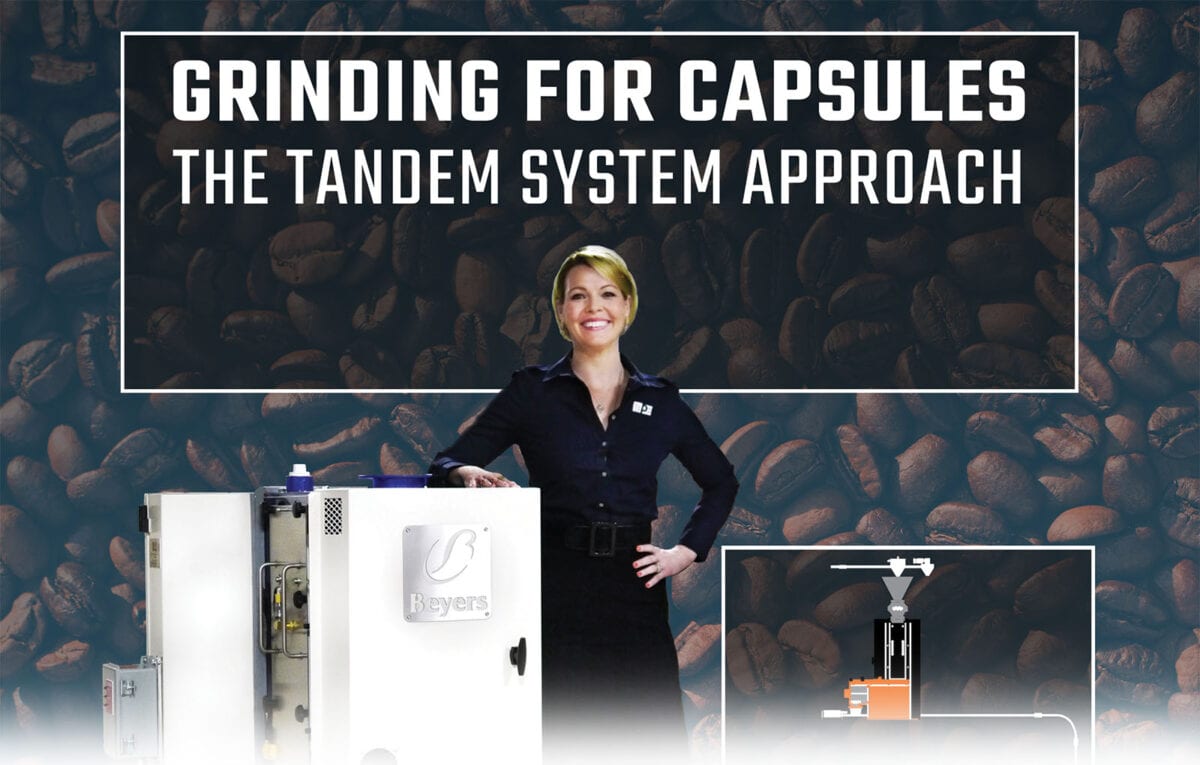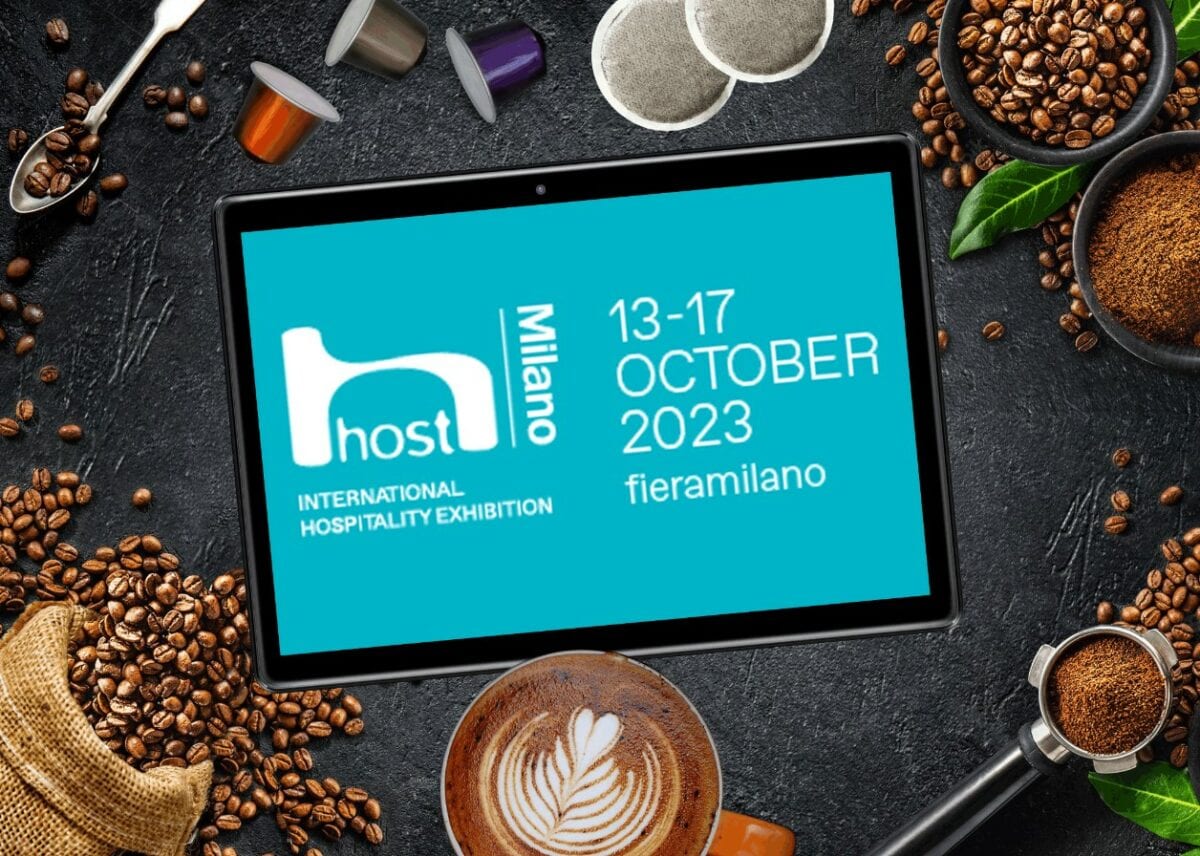Pet food production entails multiple intermediate steps to turn raw ingredients into kibble and treats. MPE’s familiarity with the pet food processing industry goes back over 60 years, when our roller mill equipment first entered pet food production facilities. In the late 2000s, MPE’s Chain-Vey tubular drag conveyors first appeared inside pet foot facilities for moving finished pet food treats and kibble to storage and packaging machines. The Chain-Vey’s flexible, gentle, and reliable operation exceeded where more traditional forms of conveyance (bucket elevators, pneumatic systems, screw/drag conveyors) fell short in moving finished food products. MPE’s core values of listening to customers and solving pain points are largely responsible for bringing the Chain-Vey into the limelight of pet food production, expanding Chain-Vey application offerings to more effectively convey product between intermediate processing steps beyond finished kibble.
For plant engineers operating pet food plants and producing a quality product, Andrew Willse, Chain-Vey’s Product Line Manager, and a mechanical engineer himself, posed the question:
“What if we could do the majority of your conveying with one type of conveyor?”
This idea resonated with pet food production managers at trade shows, plant visits, and on lunch-and-learns.
While typically not categorized as a value-add operation, efficient conveyance can greatly impact production quality and yield. From mitigating product segregation and degradation to increasing cleanliness and uptime MPE’s Chain-Vey conveyors are able to effectively eliminate complex and maintenance ridden combinations of screw and drag conveyors, bucket elevators, and pneumatic systems.
Chain-Vey offers virtually all the advantages of screw conveyors, bucket conveyors, and belt conveyors with none of the drawbacks or shortcomings. Its small footprint, flexible layout options, and enclosed design allows for zero exposure to dust or ambient air, meaning you can run the conveyor anywhere, even between rooms and entire buildings to maximize space without limiting production capabilities.
Each of Chain-Vey’s benefits are demonstrated in the following hypothetical processing stages.
Raw Ingredient Intake
For the first part of a pet food process system, the intake of ingredients should be fast and reliable. Chain-Vey tubular drag conveyors are able to have multiple inlets and discharge locations within a single system. Whether unloading bags, super sacks, or bulk trucks MPE’s Chain-Vey is able to effectively convey a wide range of raw ingredients with nearly zero cross contamination. The chain itself is virtually indestructible, and the turnarounds are self-tensioning, meaning virtually no maintenance. This allows operators to quickly and reliably move raw ingredients into the system and get work done. Chain-Veys are also quiet and will not sift and segregate raw ingredients, meaning the batch quality control will remain consistent and on-target, wherever they travel to next, such as a blender/mixer, batching silos, or intermediate storage.
Transfer from Mixer
The next step entails transferring from a mixer to an extruder. At this stage, preventing any declassification or segregation of the ingredients is important so that all the kibble or treats have the same composition. The individual pockets of Chain-Vey move mixtures of flours, additives, and fats, and flavorings all at the exact same rate. However, other conveyors have the potential to separate and segregate the ingredients whose mass and size differ. Chain-Veys do not have this shortcoming however. They also offer the benefit of continuous wiper discs, where the conveyor is self-cleaning and ensures 100% of the product that enters also exits. This self-cleaning attribute also preserves batch integrity by ensuring none of any previous batch ends up in the next one. Whereas some other types of conveyors may leave a lot of surface area and crevices where flavorings, colors, and other ingredients can make their way into the very next batch.
Post-Extrusion
After the extrusion process, this is where Chain-Vey engineers can test your product for conveyance viability. Pet foods may vary greatly in their composition that can significantly change the nature of moving the product. Chain-Vey engineers have proprietary disc designs and special pipes whose attributes may be better suited for very soft uncooked or high-fat products. The exact combination and overall viability can be thoroughly vetted at MPE’s world-class Chain-Vey product testing lab.
Finished Kibble and Reclaim
The fines and reclaim step is an opportunity in the process to exercise quality control and making sure product that extruded out of spec can be saved, transferred back to the mixing stage for reintroduction into the batch. It reduces wasted product tremendously and ensures uniformity of the product. The difficulty is with retrieving this out of spec product and then efficiently bringing it back to the pre-extrusion stage. To do this without a multi-directional, flexible tube conveyor such as a Chain-Vey requires multiple belt conveyors at the various discharge points, a bucket conveyor to raise the product back up, and potentially another screw or belt conveyor to bring the product back to the pre-extrusion entry point. Whereas with a single Chain-Vey, plant managers can collect the product at multiple inlets, carry it up high verticals, and then run long distances to anywhere in the facility. And the added benefit of doing this with only one Chain-Vey conveyor means less maintenance and easier operation.
Post-Coater
Coating the kibble or treat to add extra flavoring or nutritional value is a key step many pet food processors do to increase the pet’s enjoyment of the product. The coatings themselves can sometimes require more testing for application validation. Much like with the post-extrusion process, your sales engineer can do testing with many different configurations to ensure that the product can be properly conveyed.
Post-Cooler to Storage or Packaging
After cooling the finished pet food, the product needs to stay fresh, hygienically handled, and protected from degradation. Chain-Veys are soft and gentle on product, ensuring to never break or scuff the food. And the thoroughly-enclosed design protects the freshness of the kibble and treats. Their self-cleaning capabilities mean the conveyor will stay clean and provide plant mangers with peace of mind that the final product is safe, delicious, and perfectly handled for maximum consumer satisfaction.
In closing, Chain-Vey presents a tremendous value proposition for plant managers when considering the totality of a pet food process operation. While a process system with screw conveyors, belt conveyors, and bucket elevators alone can safely and reliably be used in pet food production; their requirements on maintenance, cleaning, space, controls, and potential for ingredient sifting and product degradation means Chain-Vey should be the conveyor on the forefront of every plant manger’s mind. Reach out to Chain-Vey’s helpful team of sales engineers to learn more.




